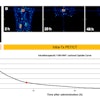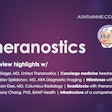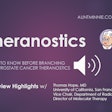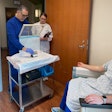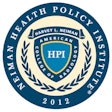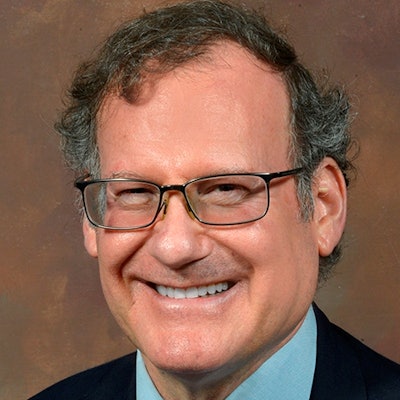
The upcoming Society of Nuclear Medicine and Molecular Imaging (SNMMI) annual meeting in Philadelphia will mark the end of President Dr. Bennett Greenspan's one-year term, a tenure that focused on promoting the value of the specialty as well as addressing ongoing challenges such as reimbursement for agents.
In addition to these advocacy efforts over the past 12 months, the SNMMI also published a series of appropriate use criteria (AUC) and updated guidelines for nuclear medicine procedures. AuntMinnie.com recently spoke with Greenspan to hear his thoughts on the current state of nuclear medicine and SNMMI's path to the future.
AuntMinnie: As your term as president of the SNMMI winds down, what do you see as some key accomplishments over the past year?
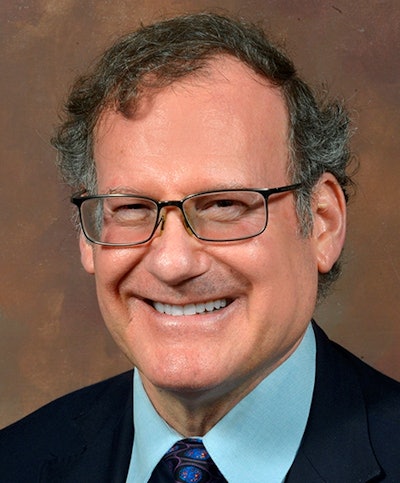 Dr. Bennett Greenspan.
Dr. Bennett Greenspan.Greenspan: The major one is the establishment of our Value Initiative, which helped us devise our new strategic plan. Both of these will provide a road map to deal with the challenges that we face and try to promote the value of nuclear medicine to a broad set of people and organizations. That includes all physicians, especially radiologists, along with trainees, medical students, industry partners, regulators, patients, and hospital administrators.
There are several domains within this Value Initiative. They include quality of practice, research and development, and workforce pipeline and lifelong learning. The latter is designed to attract bright young students and help them realize how interesting nuclear medicine is and how valuable it can be as a career.
Next is advocacy where we are promoting the value of nuclear medicine to physicians managing their patients, as well as government regulators -- the Nuclear Regulatory Commission, the U.S. Food and Drug Administration (FDA), and the U.S. Centers for Medicare and Medicaid Services (CMS). The fifth one is outreach, which is more for the public; this is where hospital administrators come in, so we can promote the benefits of nuclear medicine.
The SNMMI also has been quite active as a CMS-qualified provider-led entity in publishing a series of AUC.
The appropriate use criteria are required for referring physicians to order advanced diagnostic imaging studies. As a qualified provider-led entity, SNMMI can devise our own AUCs, which also are required by CMS for reimbursement. We published five [AUCs] this year and have five more in the pipeline.
Clinicians must consult a clinical decision-support mechanism to order appropriate advanced imaging tests, so they are not ordered inappropriately, are unnecessary, or are misused. By devising the AUCs, we are hopefully promoting better quality medical care.
You mentioned attracting young people to nuclear medicine. How is that effort going?
There are a number of issues at work here. First of all, the science of nuclear medicine is fantastic and getting better. In the past couple of years, we had two new diagnostic imaging agents approved, one of which is for imaging patients with prostate cancer (Axumin F-18 fluciclovine, Blue Earth Diagnostics) and is far better than anything we have had before. The other one is gallium-68 DOTATATE (Netspot, Advanced Accelerator Applications), which images neuroendocrine tumors. This is, by far and away, the best imaging agent we have for this disease.
In January, the FDA approved the first therapeutic agent for neuroendocrine tumors -- lutetium-177 DOTATATE (Lutathera, Advanced Accelerator Applications). So now we have a theranostic agent that combines the diagnostic ability to evaluate the extent of disease with the therapeutic component to treat the disease.
In addition, equipment is getting better. There are two institutions working on whole-body PET imaging. We have PET scanners that are very good, but they have a limited field-of-view for each image, so patients get several images that are put together. That's fine, but with a whole-body scanner we will have more sensitivity and faster throughput. Instead of a patient spending 40 minutes under the camera, it might be five or 10 minutes; and with a longer scan time, the resolution will be much better. Of course, that is still several years away.
Have the employment prospects for aspiring nuclear medicine technologists improved?
Part of the problem is that in this country the job opportunities for nuclear medicine are not great. People who are trained in nuclear medicine without another specialty have an incredibly difficult time getting a job, because most of the nuclear medicine duties are performed by radiologists who receive a minimum of four months of training in nuclear medicine in their residency. While these radiologists are very smart, four months of training is not a lot.
In reality, nuclear medicine is a separate medical specialty. Nuclear medicine relies more on physiology and function and biochemistry, while radiology is more anatomic. The thinking processes of the two specialties are different.
To what degree has cross-training between specialties been successful?
There are several pathways into nuclear medicine. One way is to go directly into nuclear medicine after an internship; that requires three years. Another option is going into nuclear medicine through radiology, which usually generally requires one year; that can be a residency or fellowship with minimal differences.
So, yes, we are increasing cross-training. Nuclear medicine residents are required to have training in CT. The requirement now in radiology training is to have six months of nuclear medicine, which in my view is still not sufficient. It is enough to have a beginning and they can probably do basic studies, but in my view they should not do complicated studies and should not do therapies.
One constant issue over the past decade has been a reliable and adequate supply of molybdenum-99 (Mo-99). Is there still reason for concern?
I think there has to be some caution. The manufacturers are working together and doing their best to make sure there is adequate supply. I have to give them credit for their collaboration. The problem is many of the reactors are very old and have to go down for maintenance.
It can be frustrating because sometimes people have to change over from nuclear medicine studies to something else, and they may not go back. If they switch from [SPECT] myocardial perfusion scans to echocardiography, they may not go back to SPECT. Echocardiography is fantastic for looking at heart function, how well the heart is beating, and ejection fraction. Nuclear medicine studies do that but also identify ischemia much better. With mild ischemia, there is no change in function, so echo cannot diagnose ischemia unless it is severe.
There are other examples where CT is done instead of a nuclear medicine study. CT is more anatomic, its spatial resolution is better, but in terms of function and metabolism, it is nowhere near as good as nuclear medicine.
Rubidium is mentioned as an alternative for cardiac imaging. Are there other alternatives to Mo-99-derived isotopes?
The chemistry of technetium-99m is very complicated, but people have worked it out. Rubidium for the heart is a totally different process, because that comes from a generator. PET imaging uses fluorine-18, and there are other isotopes in the research setting. I think that will increase over time, but for now the major radioisotope is FDG.
As we head into the future, I see us developing many different agents, most of them labeled with fluorine-18 to look at DNA synthesis with agents in clinical trials. Fluorine-18 is very easy for us to image with PET cameras. If we can identify the tumors, we can treat these malignancies far more precisely than we do now and have targeted therapies to produce much better results. I foresee in five years that we will have far better outcomes and far less morbidity.
Unfortunately, CMS again recently declined coverage for sodium fluoride (NaF) PET scans. Do you think proponents will continue the effort to convince CMS of its value?
We were very disappointed with the CMS decision. NaF-PET is a very valuable agent. Personally, I think every cancer patient who needs a bone scan should get an NaF-PET scan. It is more difficult to read and takes more time, but its sensitivity is as high, if not higher than, a conventional scan, and its specificity is far better. For CMS to say there is not enough evidence I think is ridiculous. I don't know how they could come to that conclusion.
Has the timeline improved for the approval and reimbursement of agents?
CMS is very slow to reimburse for many agents. In fact, the FDA in approving agents now is working much better with us and is much more collaborative. They are frustrated with CMS also, because when they approve an agent, they want to see it in use. If CMS says it does not want to pay for it, they find all sorts of reasons -- it is still experimental, you did not get the right approval, it was submitted a day late.
If we have these agents approved but they are not reimbursed, then they will not be used, because hospitals cannot afford to perform these studies for free. They will have cost overruns of thousands of dollars. That will not work.



